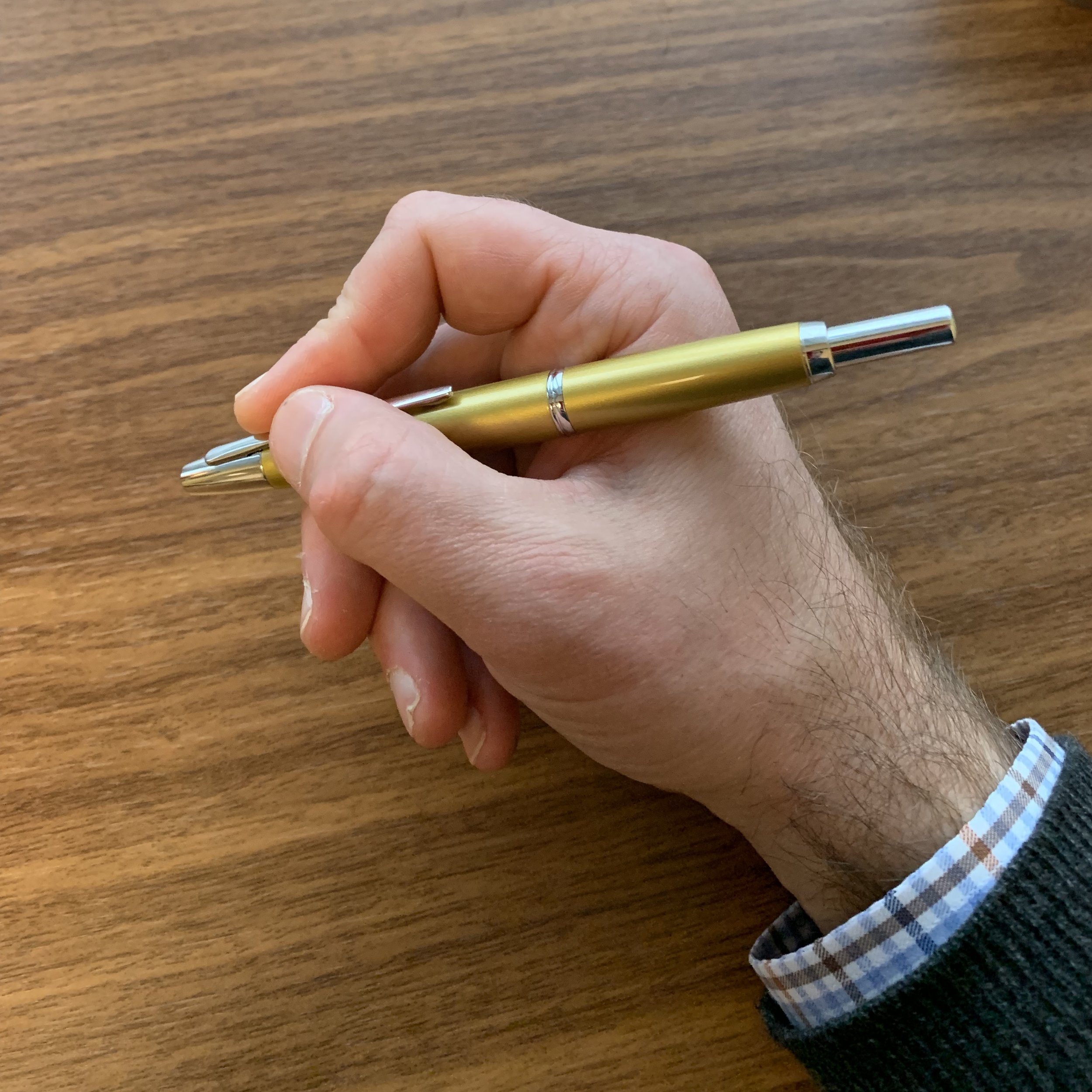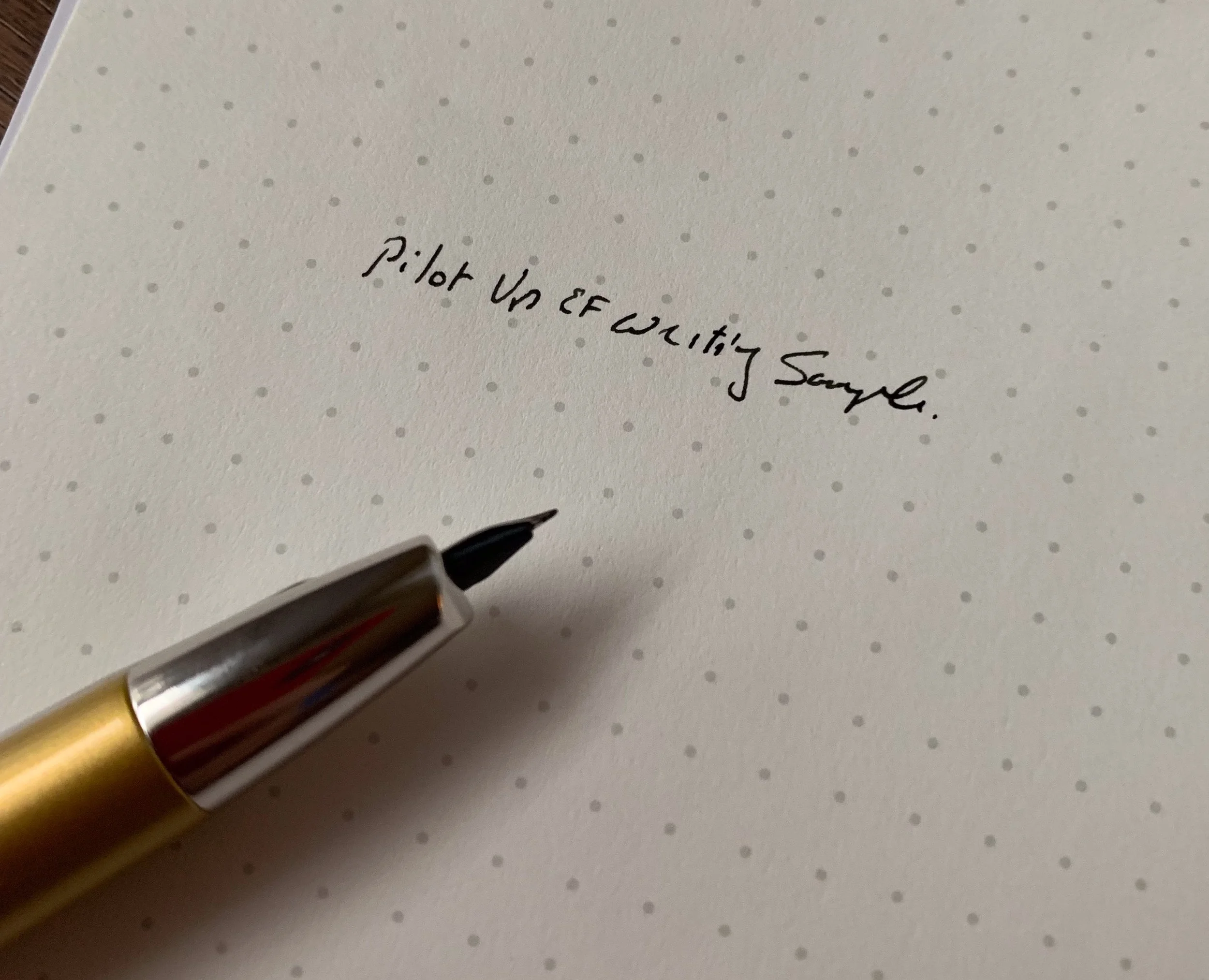Happy New Year everyone, and what better way to kick off 2019 than with a classic pen that I can’t believe I’ve never reviewed: the Pilot Capless Decimo. Most people are familiar with the standard Pilot Vanishing Point, which along with the Lamy 2000, is a staple of various “Top Pen” recommendation lists, especially at the sub-$150 price point. The truth is, I’ve never been completely sold on the standard Vanishing Point. I’ve owned several, and they’ve passed in and out of my collection multiple times over the past 10 years. They’ve never stuck.
Why? I think it’s because I find the standard Vanishing Point to be an awkward size. The barrel has a fairly wide diameter, which, in my opinion, can exacerbate grip issues due to the placement of the clip and the lack of a nontraditional grip section. The slimmer Decimo doesn’t cause these same sort of issues for me, and for that reason it’s become a key pen that I grab to take to work on a day when I have a bunch of meetings or another scenario (such as a court hearing or a deposition) when I need a pen for quick deployment. It doesn’t hurt that, like the Lamy 2000, most people won’t look twice at the Decimo and will consider it just another retractable click pen. It’s not very distracting.
I wish pen companies made more pens in this yellow-green shade. Pictured here is the Pilot Decimo in now-discontinued Harvest Yellow next to a Nakaya Long Piccolo in Wakakusa-Iro finish and ruthenium trim.
With respect to the “grip” issue that many people experience with the Vanishing Point and the Decimo: while it can be irritating if you try to use a VP/Decimo as your primary writer, my personal opinion is that people worry/think about it too much. Now, for lefties or those with extremely unorthodox grips, the placement of the clip on the Vanishing Point could indeed be a dealbreaker. But for myself (and I’d venture for many people) the Vanishing Point and the Decimo aren't intended to be the pens you use to write a novel. As I mentioned, I tend to use them for work-related notetaking and annotation, where writing comes in short bursts and I can adjust my grip if necessary without it becoming annoying, especially on the Decimo.
One note on Pilot VP/Decimo “extra fine” nib units: Pilot isn’t kidding around when they describe these as “extra fine,” and they’re definitely NOT for everyone. The EF nib is almost, but not quite as fine as the Platinum Ultra Extra-Fine (UEF) nib, and like that pen, has a bit of tooth to it. The tip isn’t scratchy, but even when perfectly tuned and aligned the point is so fine that it will catch on highly textured paper, which can make your writing look a bit spidery. Like the Platinum UEF, I prefer this nib for writing in my planner and annotating documents at work. For general everyday writing, I’ll reach for the standard fine or medium nib, or even the stub.
A full-length shot next to the Long Piccolo - I can’t get over how nice this color looks. The color on the Decimo is slightly more yellow than the Wakakusa-Iro Urushi.
Takeaways and Where to Buy
If you’re looking for a retractable fountain pen with a slightly slimmer profile than the Pilot Vanishing Point, consider the Decimo. Despite the portability implied by the “retractable” and “capless” nib mechanism, I don’t find the standard Vanishing Point to be a particularly pocketable or “portable” pen - it’s fairly chunky and the primary advantage of the capless system is that it’s easy to deploy with one hand. To me, the Decimo fits better in a shirt pocket, making this a great pen to carry at work. Paired with a high-capacity Pilot ink cartridge, the Decimo also makes an excellent travel companion.
I acquired the pen featured in this review from our sponsor Paul’s Paper & Pens in the UK. The unique yellow-green color, which I’ve seen referred to as “Harvest Yellow,” is no longer available, and I strangely can’t even find this pen on eBay. The standard Pilot Decimo currently comes in six colors (black, burgundy, light blue, navy blue, purple, and champagne/pink) and is priced at $140, a slight discount to the standard Vanishing Point. Paul’s Paper & Pens appears to not be stocking the Decimo going forward. As of January 2024, the T.G.S. Curated Shop stocks select models of the Vanishing Point and should be adding the Decimo shortly.
Disclaimer: This post contains links to paid sponsors and affiliates.


